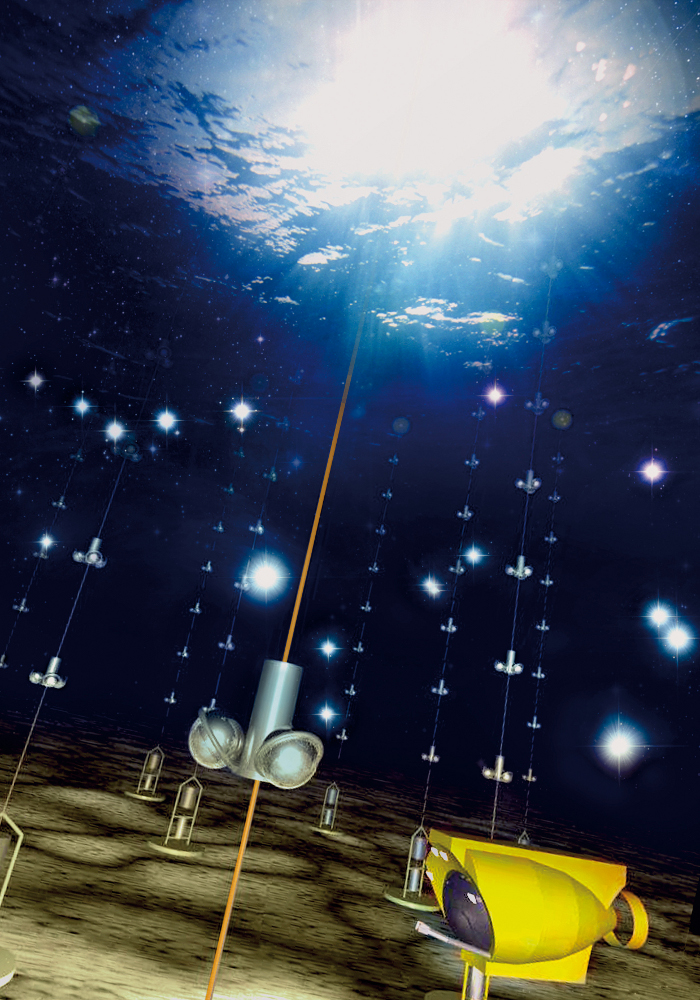Looking for dark matter with neutrinos

There is more matter in the Universe than what we can see through the electromagnetic radiation. It is the so-called dark matter, which amounts to more than 80% of all the matter in the Universe. We know it through the gravitational effects that it causes, which are numerous. The movement of stars in galaxies, of galaxies in clusters, the data of the distribution of matter in galaxies that interact, obtained through measurements of gravitational weak lensing, the cosmic microwave background, relic of the Big Bang, and the formation time of the structures in the Universe, all these processes seem to indicate that there is more (much more) matter than what we can see through the electromagnetic spectrum. To account for it, modifications of the gravitational laws have been put forward, and undetected large dark astrophysical objects have been looked for (to no avail), but the hypothesis that reaches more consensus is that we are probably dealing with unknown particles that interact very weakly with the known matter. Among the various possibilities, one of the most popular is that they are WIMPs (Weakly Interacting Massive Particles) for which some models of new physics offer, in a natural way, possible candidates.
Experimentally, the problem has to be approached through different ways. The challenge is twofold: first, because its interaction probability is very low. Secondly, because we do not know what kind of particle we are to expect is and this complicates the design of the experiments. These searches are performed mainly in three ways: direct detection, indirect detection and in accelerators. In direct searches the interaction of a dark matter particle inside the detector when it “clashes” with a nucleus of the matter from which it is made up, are looked for. In indirect searches, particles (photons, positrons, neutrinos…) produced by the annihilation or decay of dark matter particles are searched. Finally, in accelerator collisions missing energy would be detected beyond what could be explained by known processes.
In this strategy with several fronts neutrino telescopes have important features that could turn them into tools that could bring about the first signs of dark matter. The concept is that these particles would accumulate in astrophysical objects as the Sun or the Galactic Centre and would produce, direct or indirectly, high energy neutrinos when self-annihilating. In the case of the Sun, for instance, a potential dark matter signal has the great advantage of being a clear evidence, since other astrophysical backgrounds are not expected –contrary to other indirect searches based on photons or cosmic rays. A team of researchers at IFIC has used the data recorded by the ANTARES neutrino telescope, located at a depth of 2,500 metres in the Mediterranean Sea, to search for an excess of high energy neutrinos coming from the Sun. From the absence of any such excess over the expected background, the said scientists have deduced upper limits to the existence of such dark matter and to its probability of interaction with ordinary matter.
















